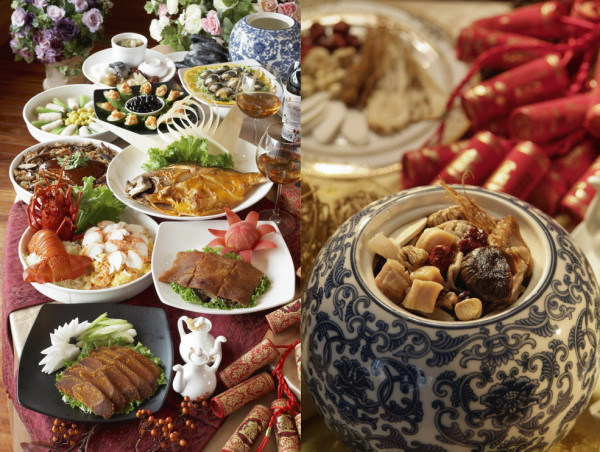Chinese Table Manners - Best Advice to Dine in China
China has long been known as a nation of rites. Chinese people attach importance to politeness, courtesy and comity on any formal occasion, whether it is a Chinese wedding ceremony, a celebration party, or a banquet. Traditional Chinese customs, including Chinese table manners, have even spread throughout East Asia.
Chinese people prefer to entertain in the public places rather than in their homes, especially when entertaining foreigners. If you are invited to their house, consider it a great honor. If you must turn down such an honor, it is considered polite to explain the conflict in your schedule so that your actions are not taken as a slight.
As they say, When in Rome, do as the Romans do. The following basic Chinese table manners will help you initially master Chinese dinner etiquette and ensure a pleasant dining experience in China.
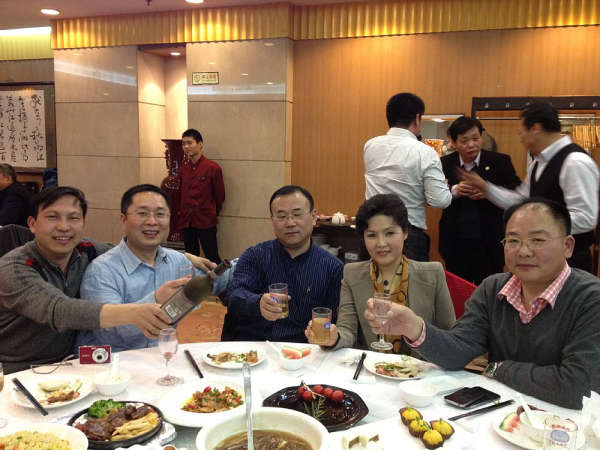
Seating
The typical seating arrangement is a part of Chinese dining etiquette. That is to say the respectable members, usually the elders or the guest of honor are given the best place – the place at the head of the table. It is discourteous to seat guests at the place where the dishes are served.
Right is the honor guest and the left is the opposite. It is just the opposite of the western culture. The reason is that the Chinese food is always served by a clockwise direction, so the guests on the right can be cared more.
According to Chinese table manners, center seat is the most honorable: When three are dining together, the person in center position is higher than the people in the seats on both sides.
The seat facing the door: According to China dining etiquette practices, when having dinner, the better seats are those facing the main entrance.
Better seats facing the landscape in the exclusive restaurants, there usually have elegant and beautiful scenery or the performances indoor which is for diner viewing. So the best viewing angle for watching is the best seat.
Best seats are besides the platform: If there have special platform in banquet hall, the table which closes to the platform is the main dining table.
What we have to pay attention to is that in the formal bouquet, the tables should be in the same direction.
If it is a party, the direction of the honor guest in each table should maintain the same direction with host table.
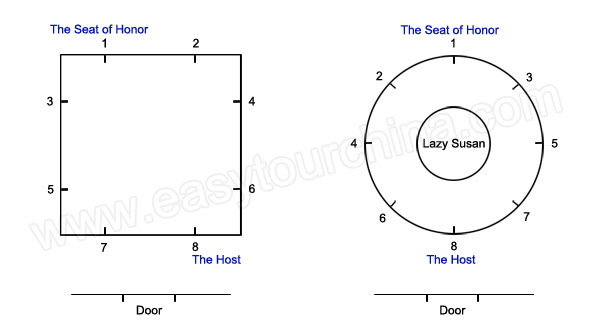
General advice for dinning in China:
Wait to be seated. Never sit at the head of a table unless you are instructed to do so.
Never take food, or eat before an older person at the table.
Dinning may only begin provided both the hosts and guests are seated. To better serve the small groups of guests, square dining tables are more often used than rectangular tables to permit easy sharing.
If you ever take out a napkin for yourself, be sure to pass napkins to everyone at the table.
If you hold your bowl, palm the bowl from the bottom. Your fingers or thumb should never touch the lip of the bowl. Holding the bowl is acceptable, but is more casual. In a business setting, do not hold your bowl while eating.
All the food is to be shared, except your own bowl of rice. The dishes are placed in the center of the table, and everyone can feel free to help yourself. Please remember not to make any noise when chewing the food.
When you do take food, place it on top of your rice. Never mix your food with your rice. Never take more than one item at a time. That is the correct table manners in China.
Soups are usually eaten last. Wait until you have nearly finished eating and then plan for the soup to be the last thing you eat.
It is ok for you to stand up and reach for your food, if there is not a lazy Susan.
Try the fried bees and pig brain. Most of the “crazy” food items are pretty good. Pig brain tastes like creamy tofu. Fried bees taste like crunchy chips.
If you eat at a Muslim restaurant in China, never ask for any pork dishes or even mention the word pigs. It can, and most likely will upset the owners and other patrons. Most of the Muslims in China are part of the Huizu ethnic minority. Their cuisine is off-the-charts good. If you are lucky enough to eat at one of their restaurants, try the squash, the beef soup, the spicy dried beef, or the stomach linings.
Sometimes a guest will bring a friend, unannounced. This isn’t a big deal, because there is always enough food for a few extra people.
A dinner can last hours. You’ll hear “man man che” a lot, and that translates to “slowly, slowly, eat.” Don’t scarf food down, and don’t only eat the dishes you like.
Chinese people may leave a lot of food behind at the table. Most of the time this food is recycled and fed to pigs, so don’t worry about waste.
The more you eat, the happier your host will be. If you eat a small amount, especially if someone made a home-cooked meal, you may insult your host.
Never let anyone still eating feel rushed to finish their meal.
It is okay to answer your phone at a table, absolutely no one will care.
In a home setting, if you want to wash the dishes, never take any dishes away from the table unless it is clear that everyone has finished eating. If you do this, it is a cue to your guests that you want them to leave.
Chinese people love to walk, or “san bu” after they eat, they say it helps with digestion.
Chinese Chopsticks Etiquette
While there are proper table manners for using fork, spoon and knife, there are also some chopsticks etiquette rules in China you’d better follow while in China to make you feel comfortable.
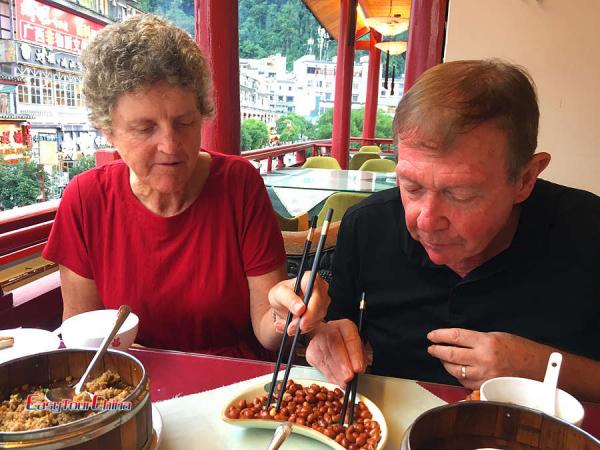
How to Use Chopsticks
Nearly all restaurants in China have spoons and some have forks. If you are not used to chopsticks, you could ask the restaurant staff to provide you with spoon and fork. Knives may be hard to find in typical Chinese style restaurants.
Chinese people have been using chopsticks to eat for thousands of years. It’s recommended to try learning how to use chopsticks while traveling in China if you want to immerse yourself in Chinese culture and are interested in eating like a local. It’s also helpful if you plan to visit unfrequented outskirts of China.
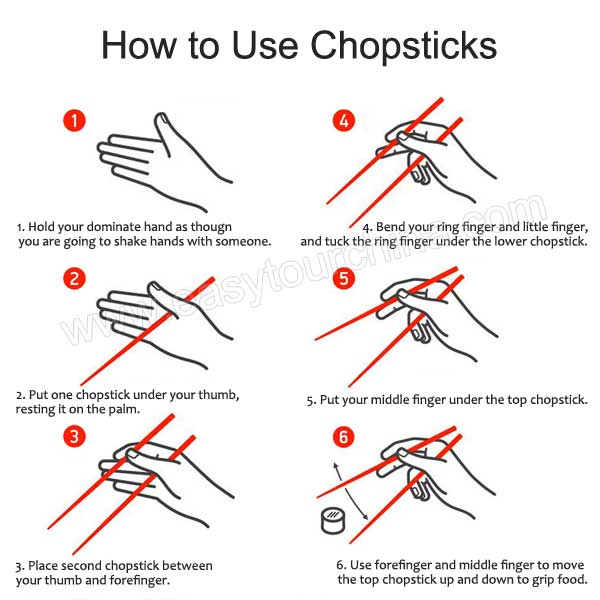
Tea
Tea is usually served in a formal Chinese dinning. The one sitting closest to the teapot should pour tea for others. When the tea is served one should say “thank you” or make a gesture of thanks. However, the host should not let guests pour tea.
Paying the Bill
If you have been invited to eat, you can make an attempt to get the check, but don’t actually pay the bill as you may lose the other party’s face. If someone calls you to go out, they are expected to pay. Nonetheless, fighting over the bill is always a good way to gain points.
Don’t ever try to give the host 50% of the bill to “pay your half”. In China, as stated just above, whoever is inviting someone out to eat is expected to pay for everyone. If you want to immediately return the favor, offer to take the person who paid out to a bar, karaoke, or to drink tea.
Stand up and start pulling the host by the arm and try to yank him back to his seat. Arm waving and arm pulling is always good.
If they manage to pay the waiter first, grab their money out of the waiter’s hand and give it back them, then give the waiter your money instead.
The bigger the scene you cause the better. Don’t worry if they seem disgruntled, they actually will be delighted with your enthusiasm.
Leaving the Table
Remember to express your appreciation to the host for his/her hospitality when it’s time to leave the table. If you have to leave halfway, you should explain the situation and apologize for leaving early, and also show your appreciation for the invite.
Experience Chinese Food in China
Interested in Chinese dining culture and eating customs? Easy Tour China’s private food tours offer you a great opportunity to experience how is food served in China and interesting dining culture in China. Here are our top 3 China food tours chosen by most customers:
Click to check the detailed culinary tour itineraries, or customize your own China food tour with Easy Tour China. All of our private Chinese food tours can be customized to meet your special interests.
